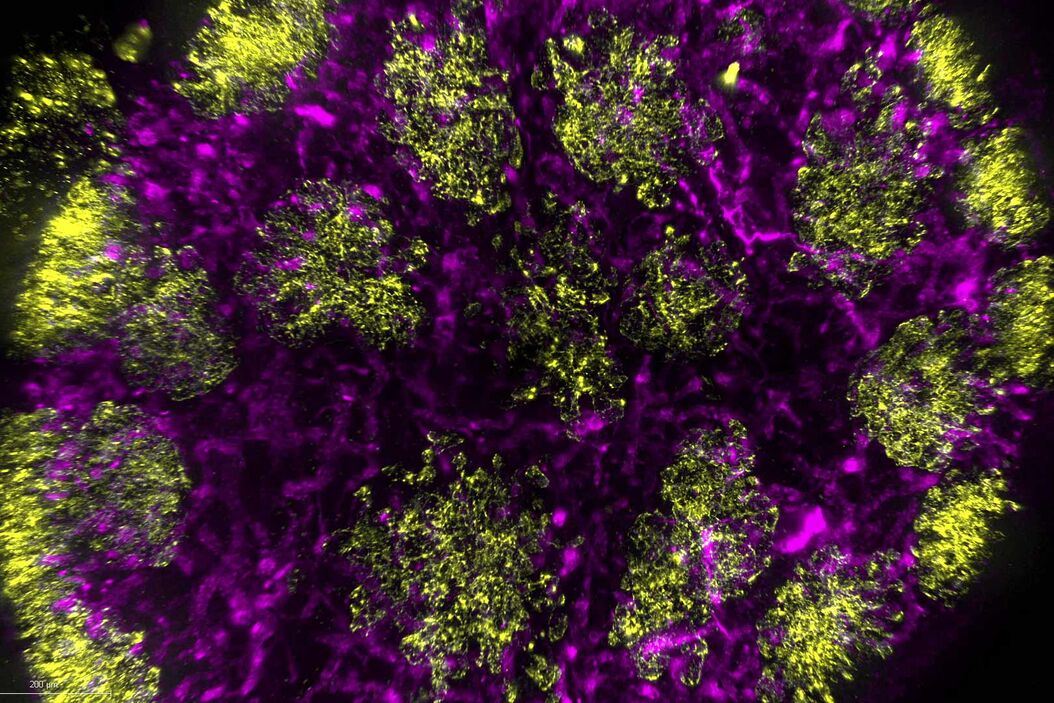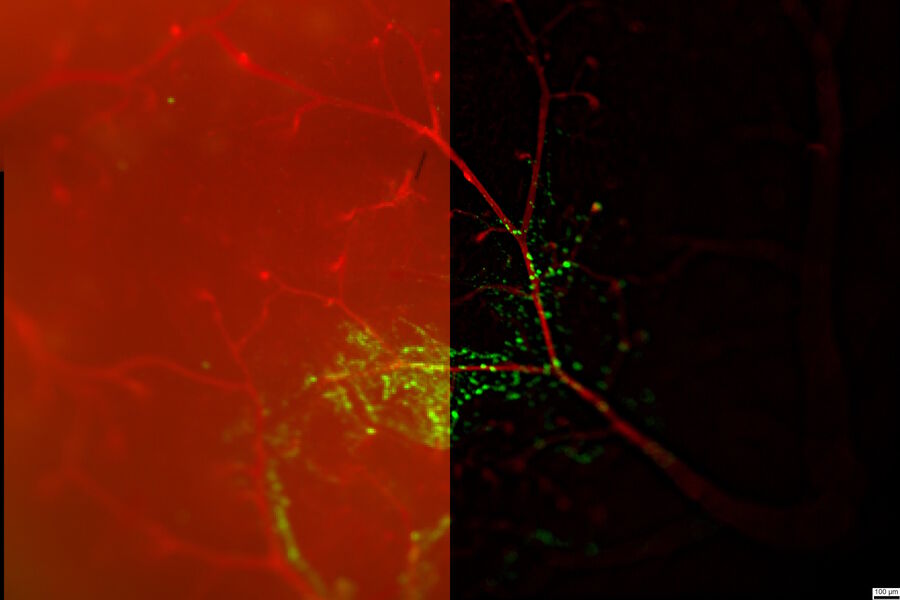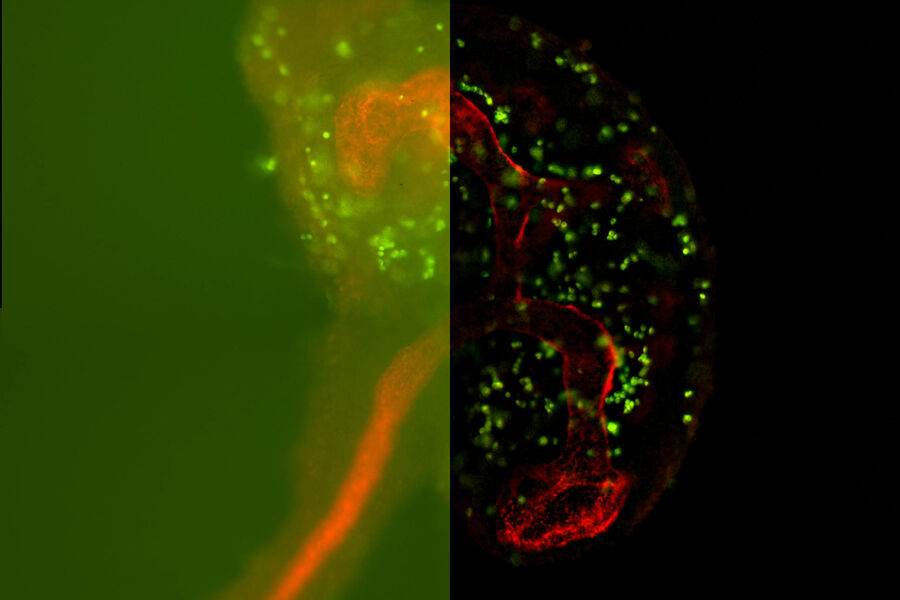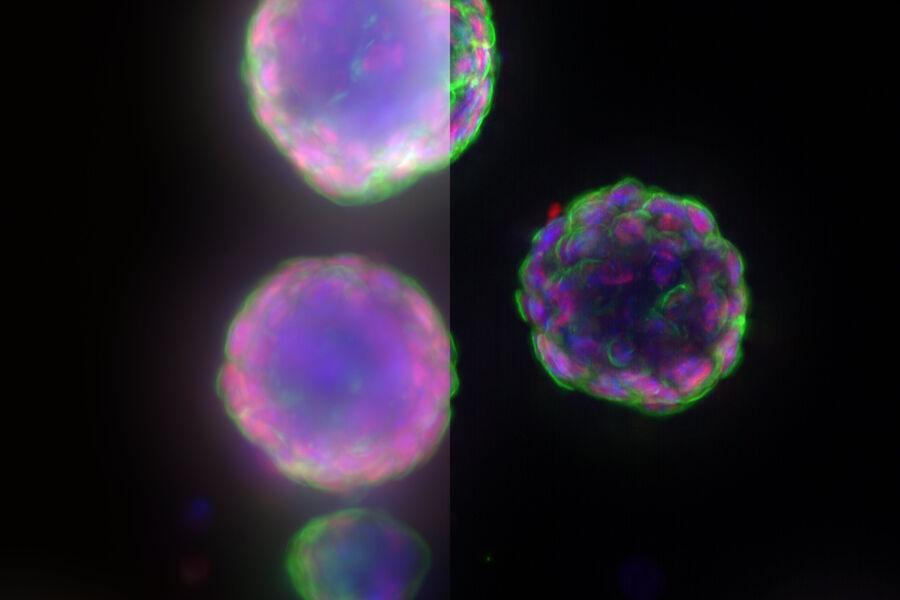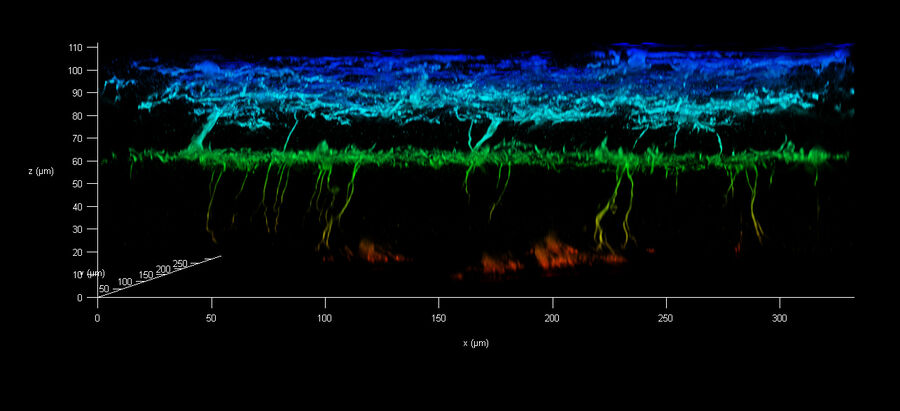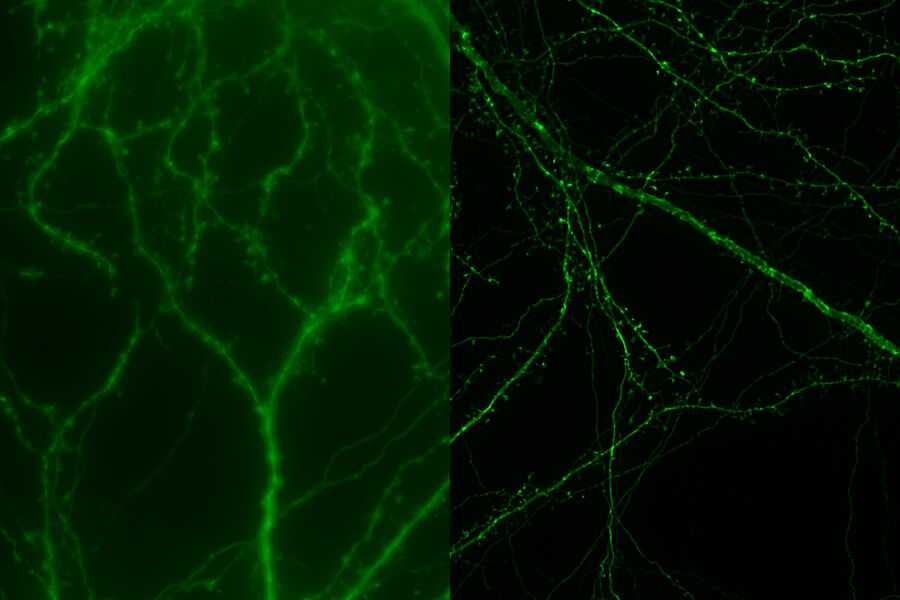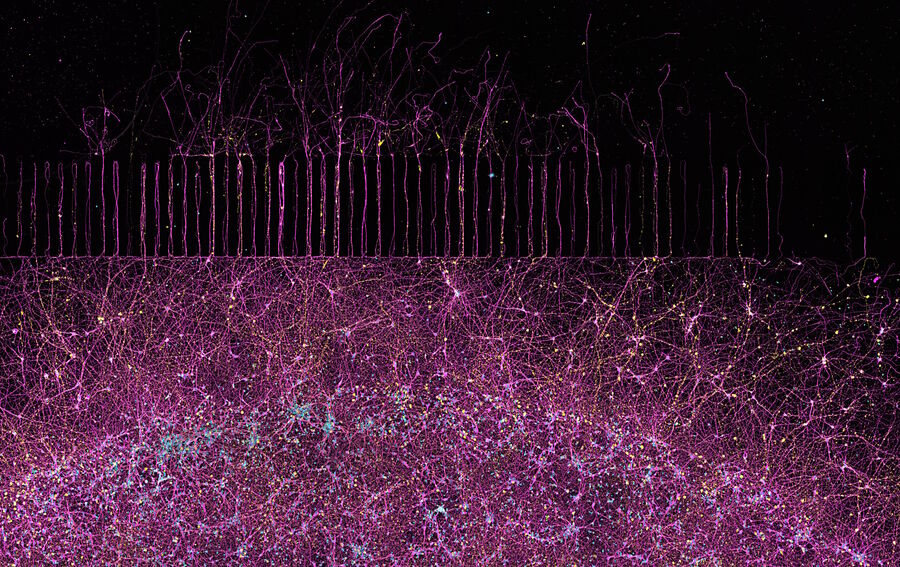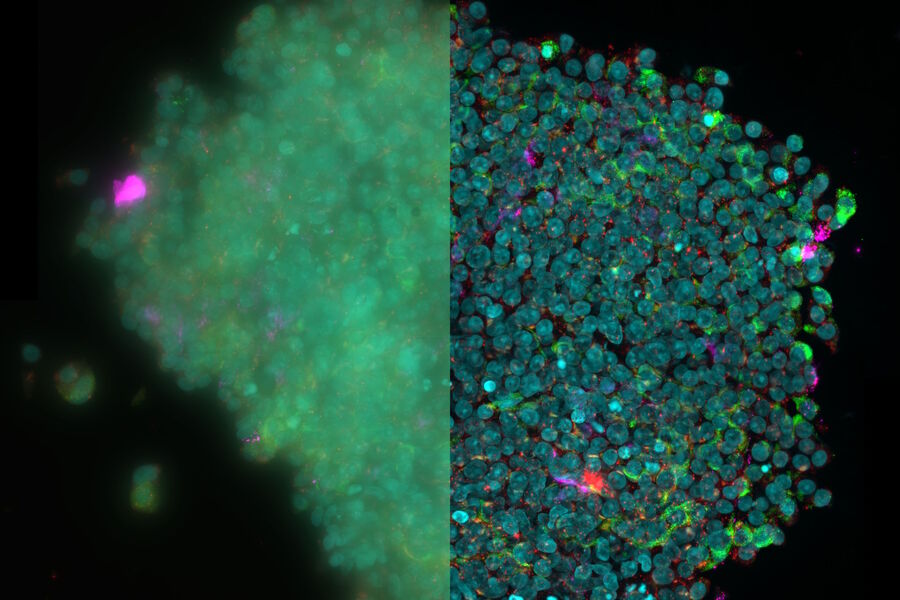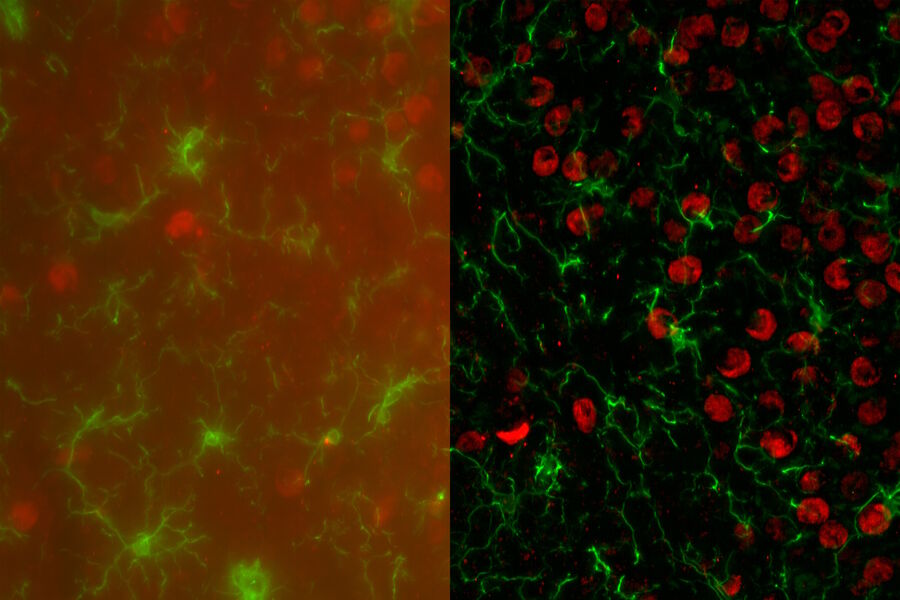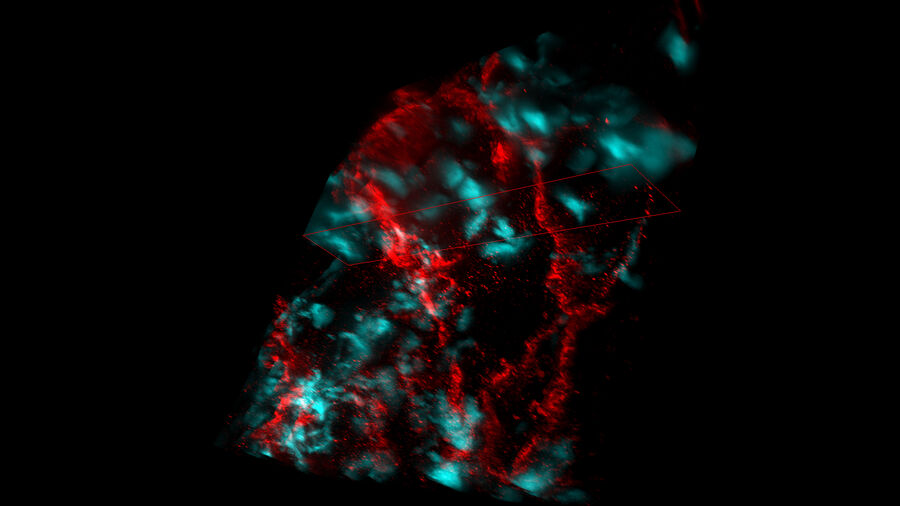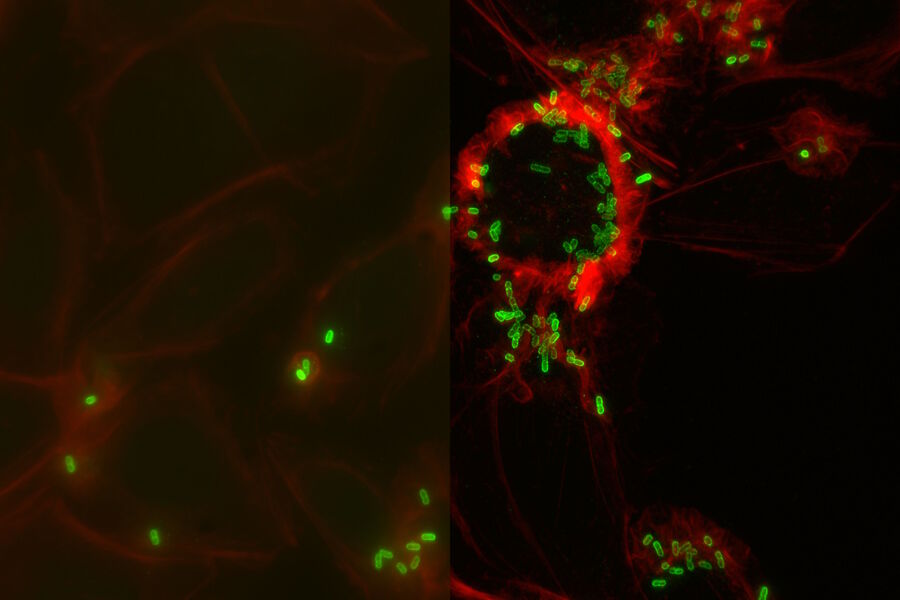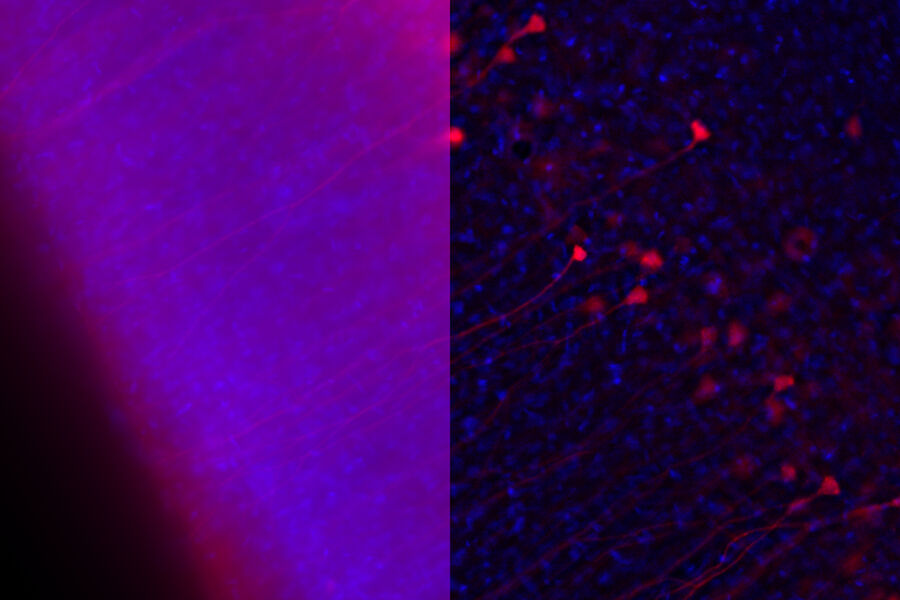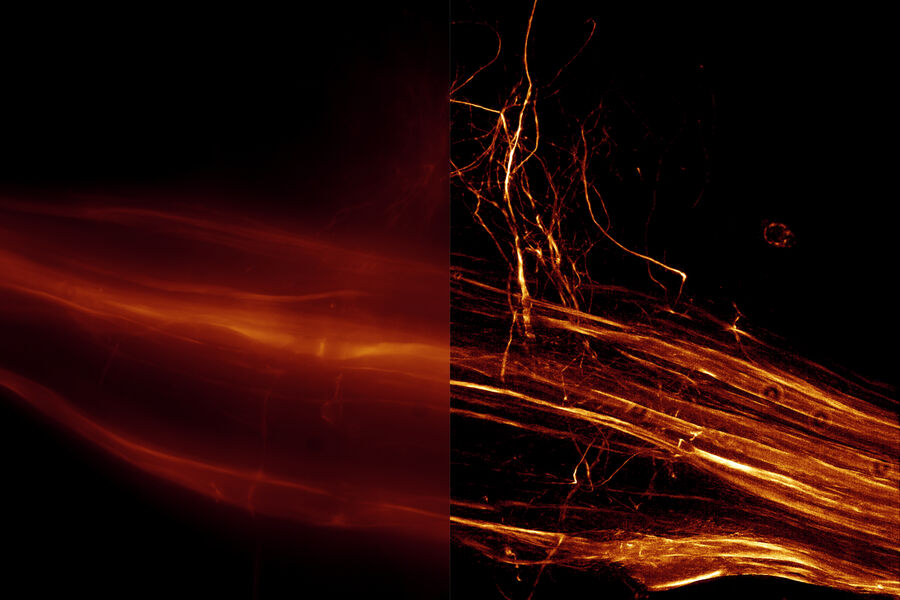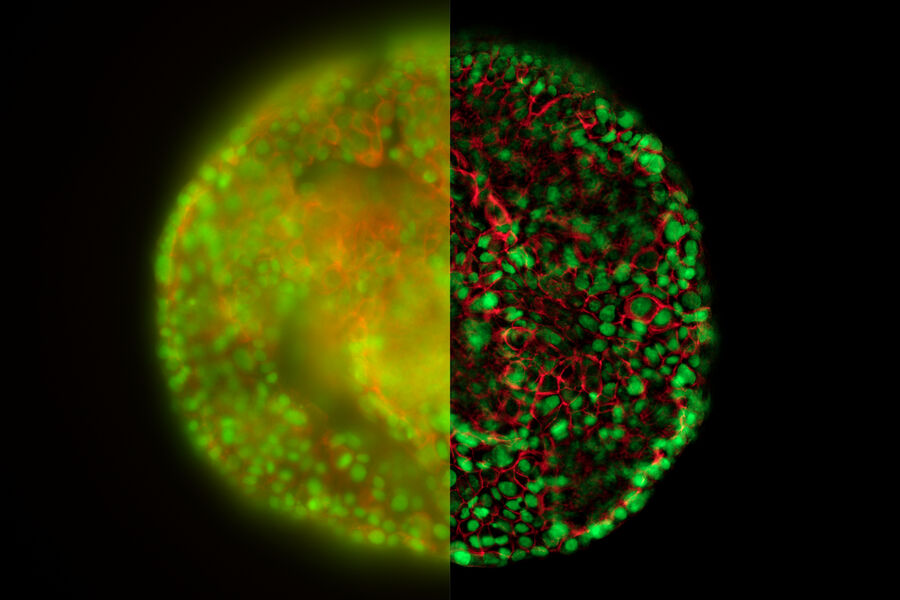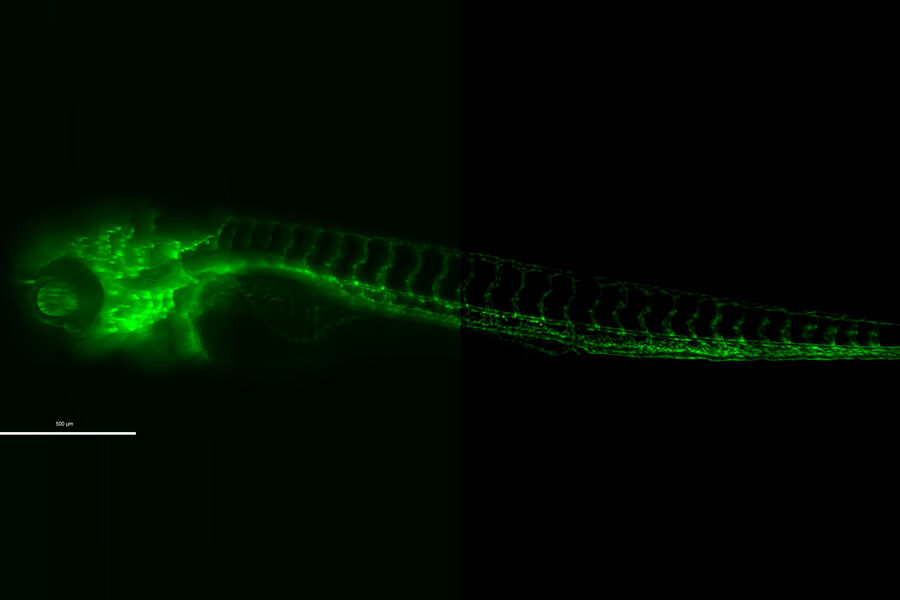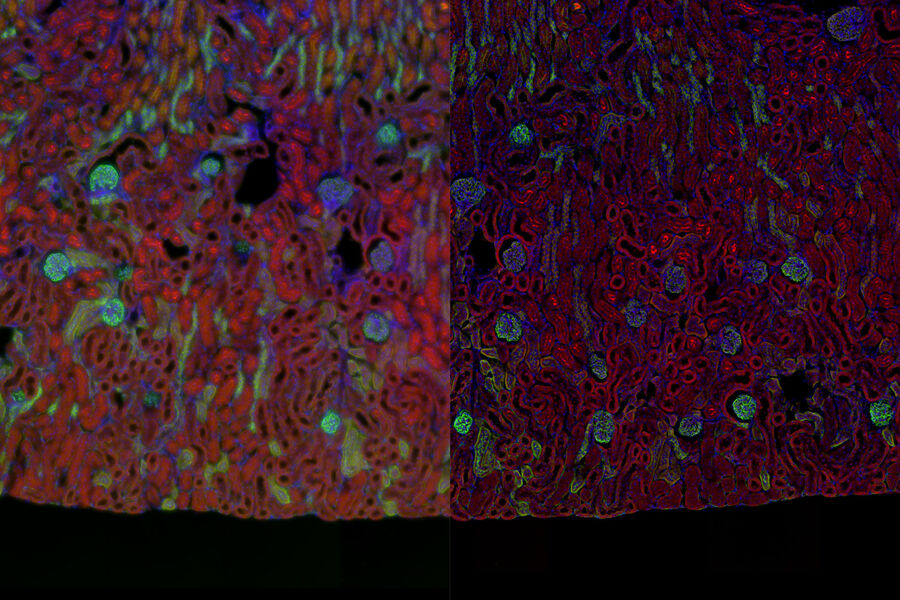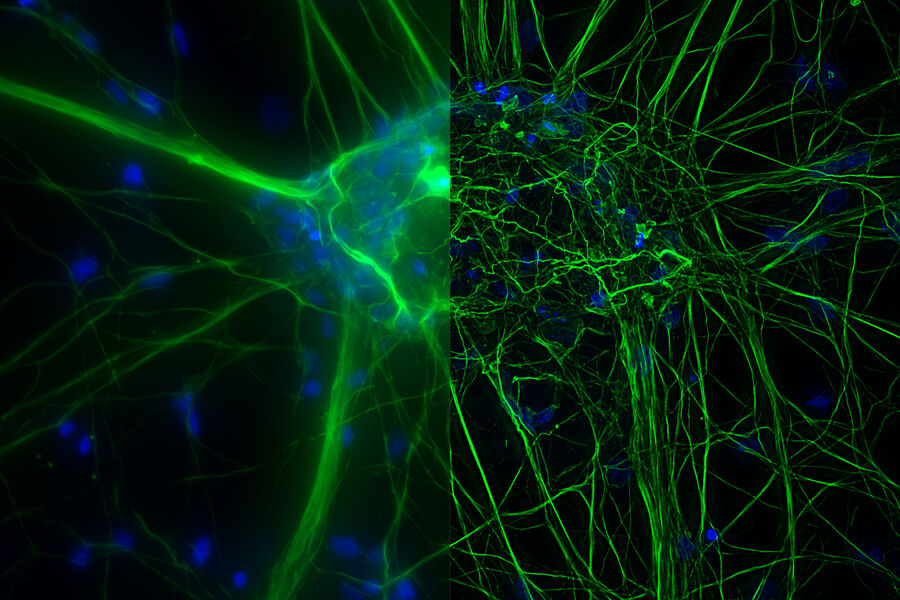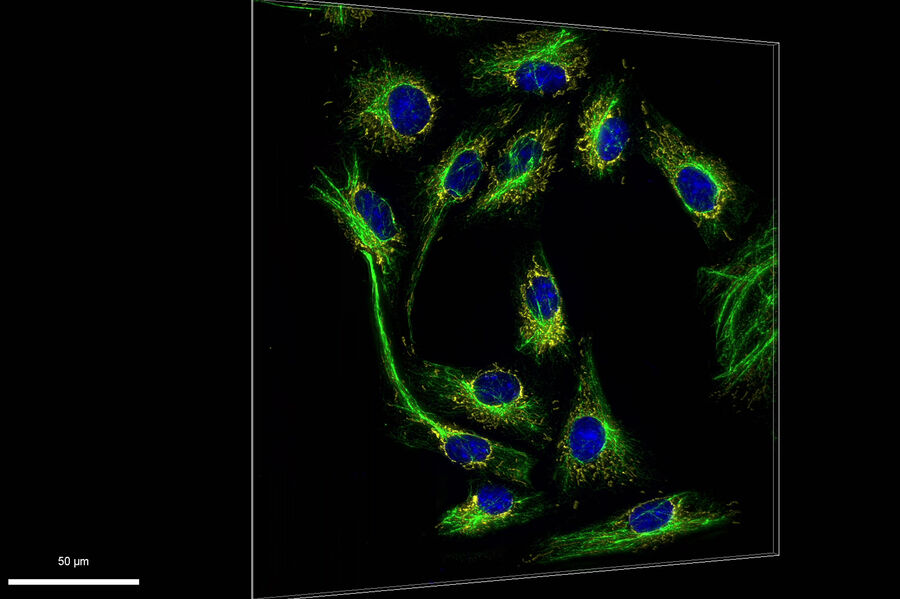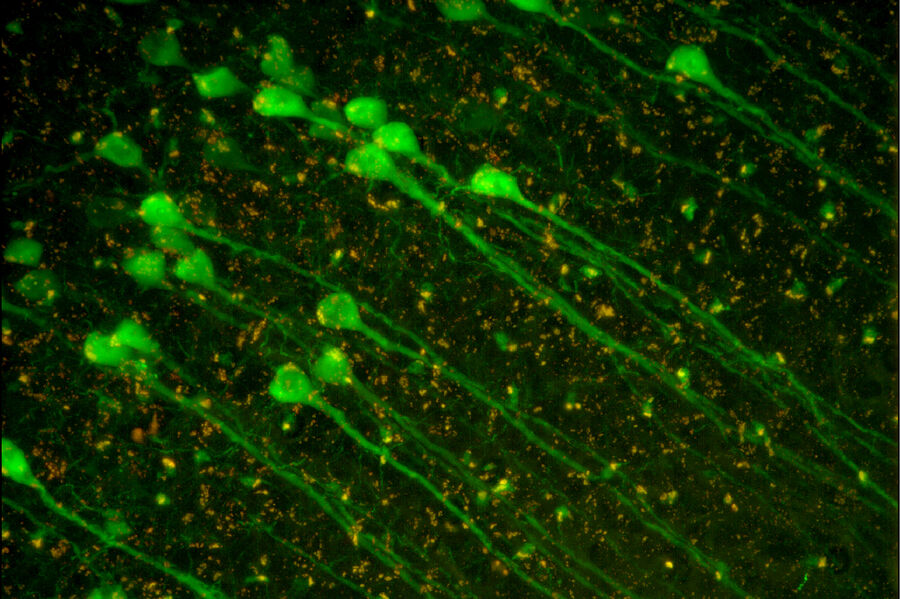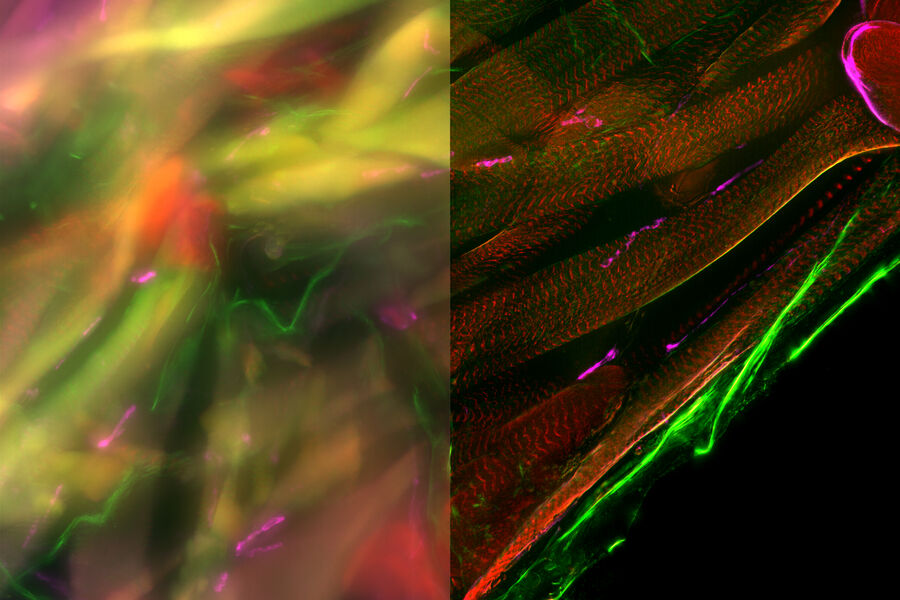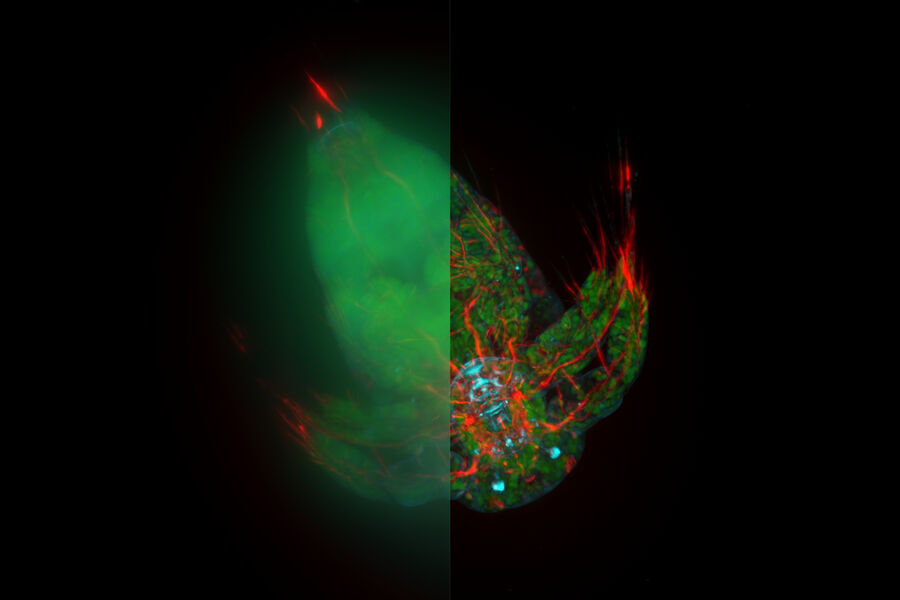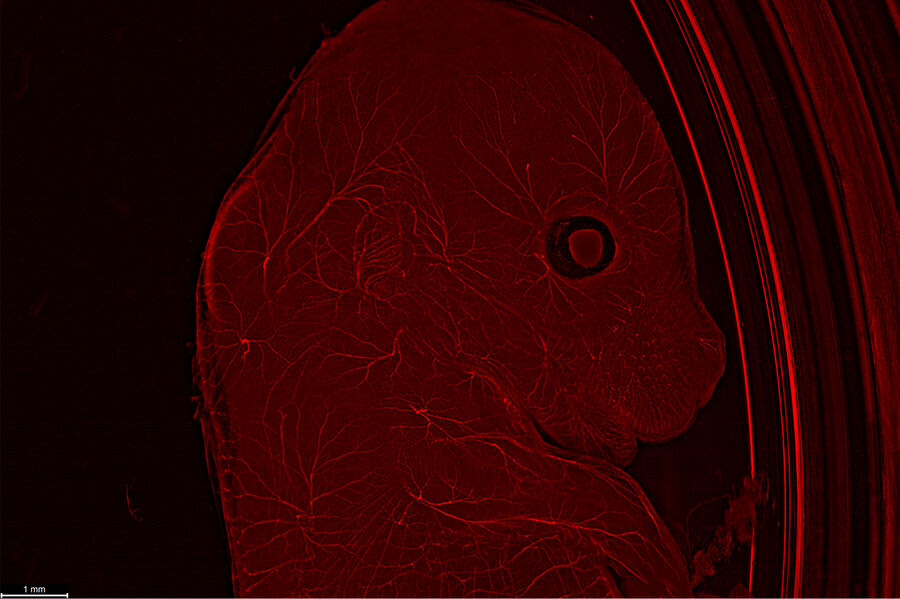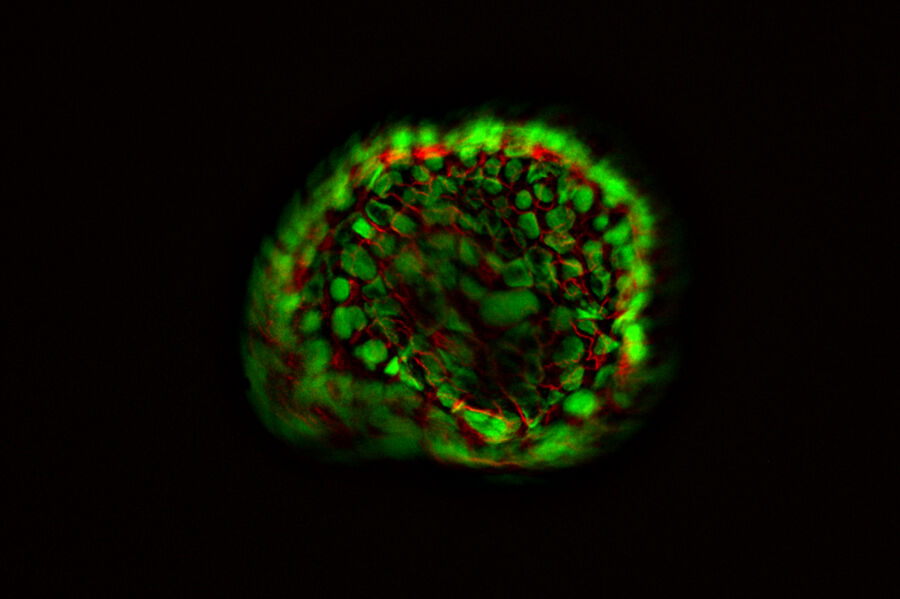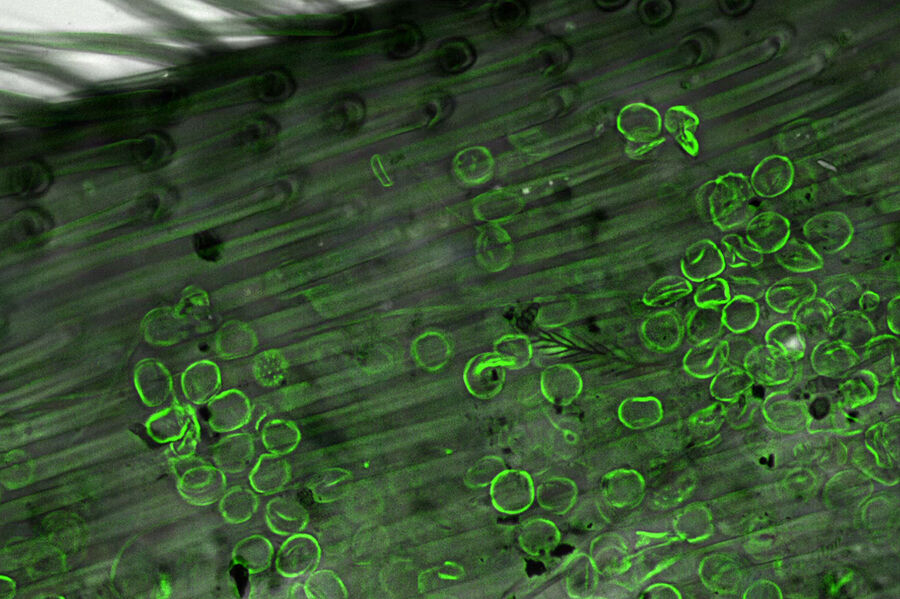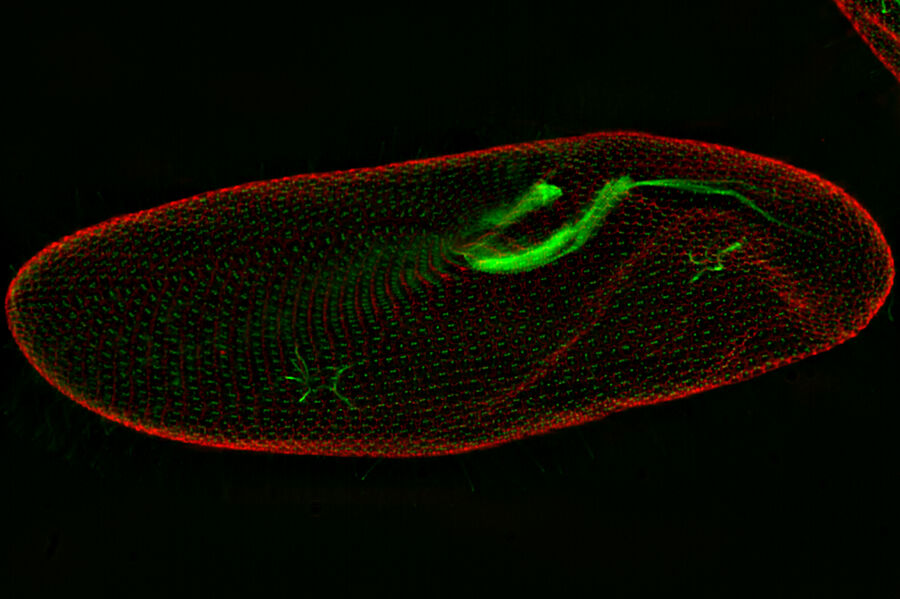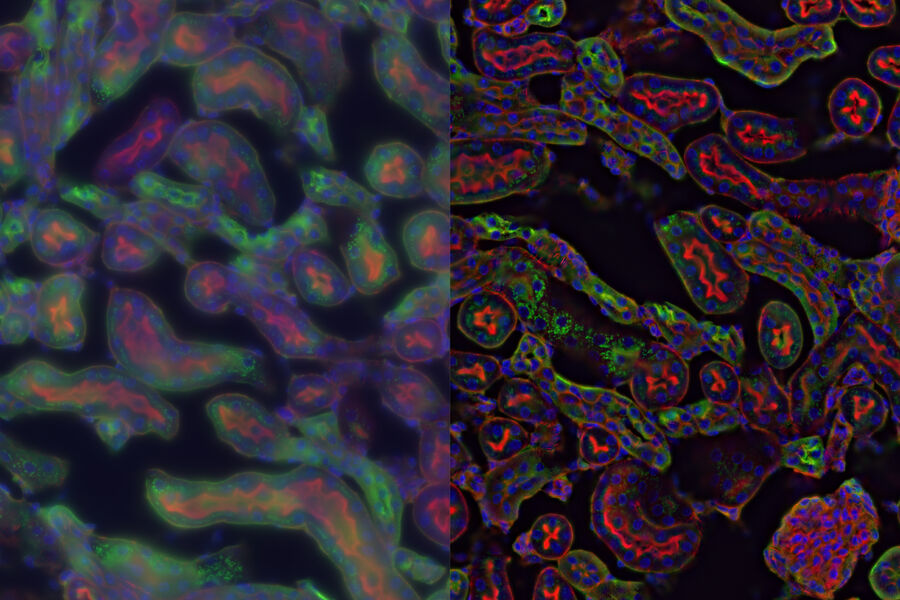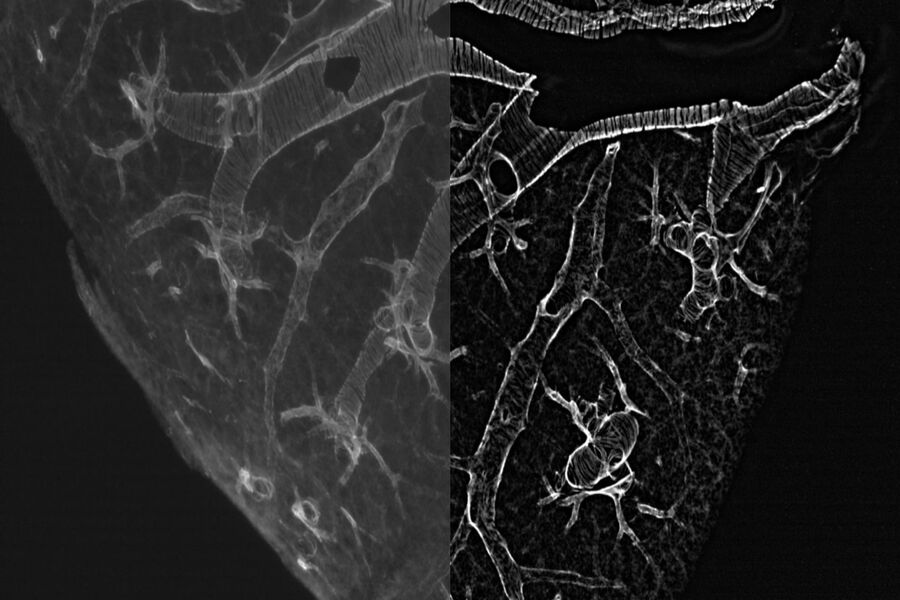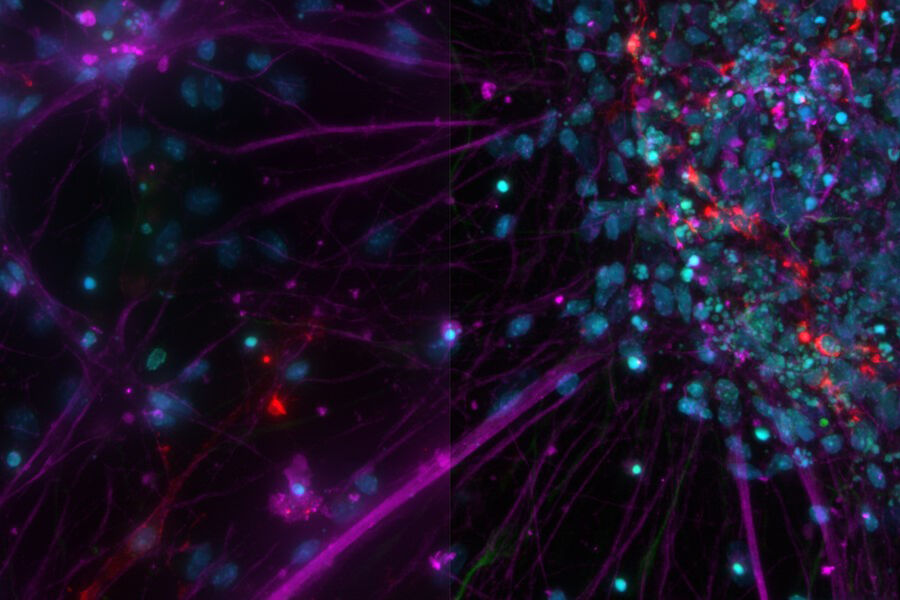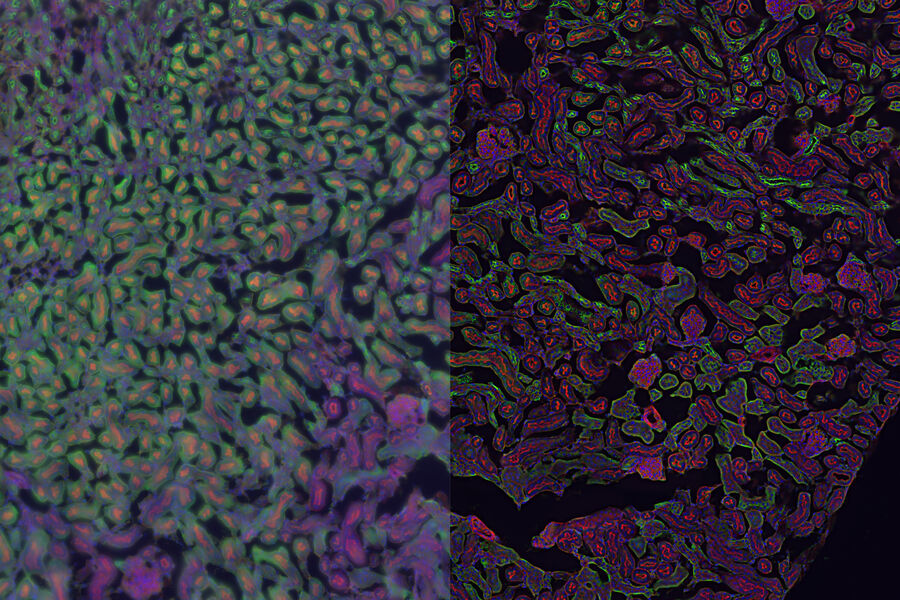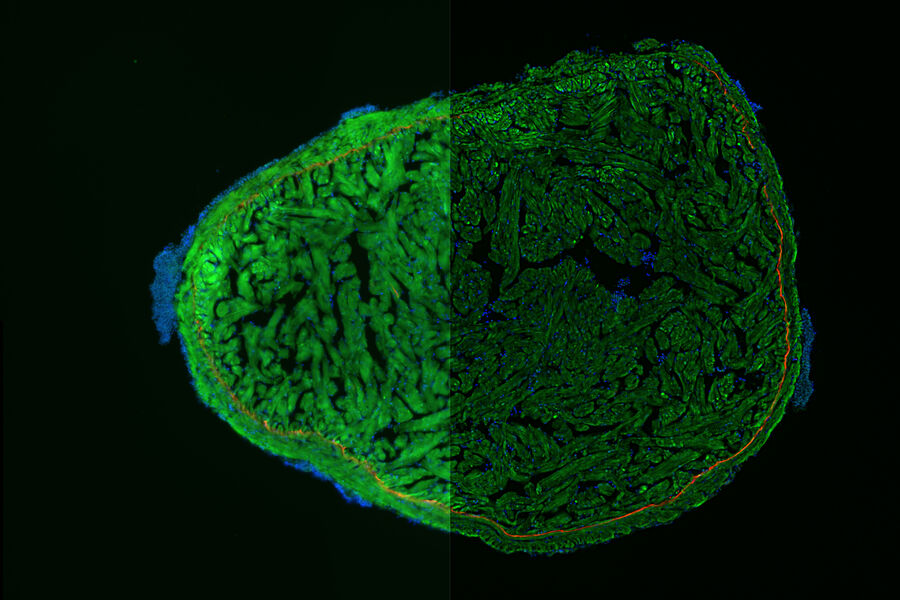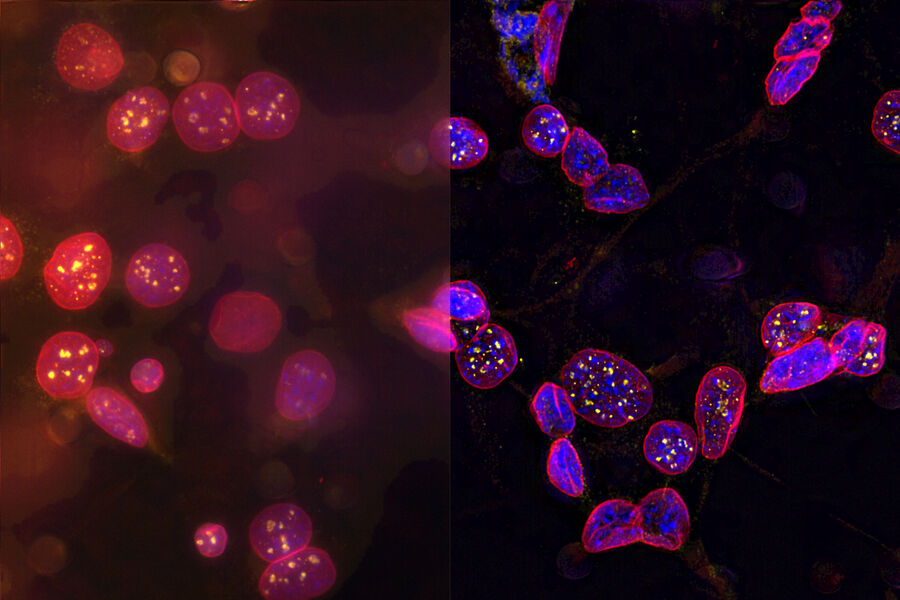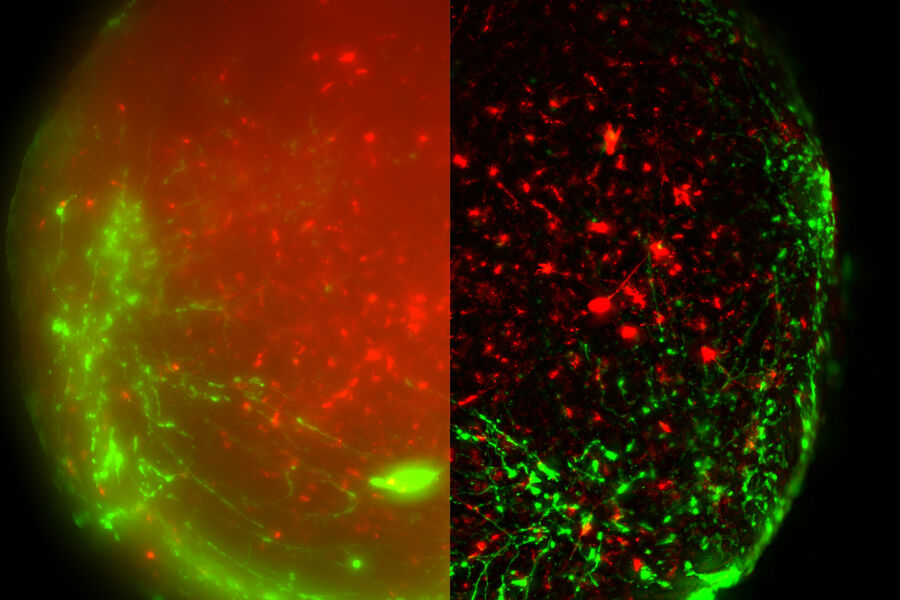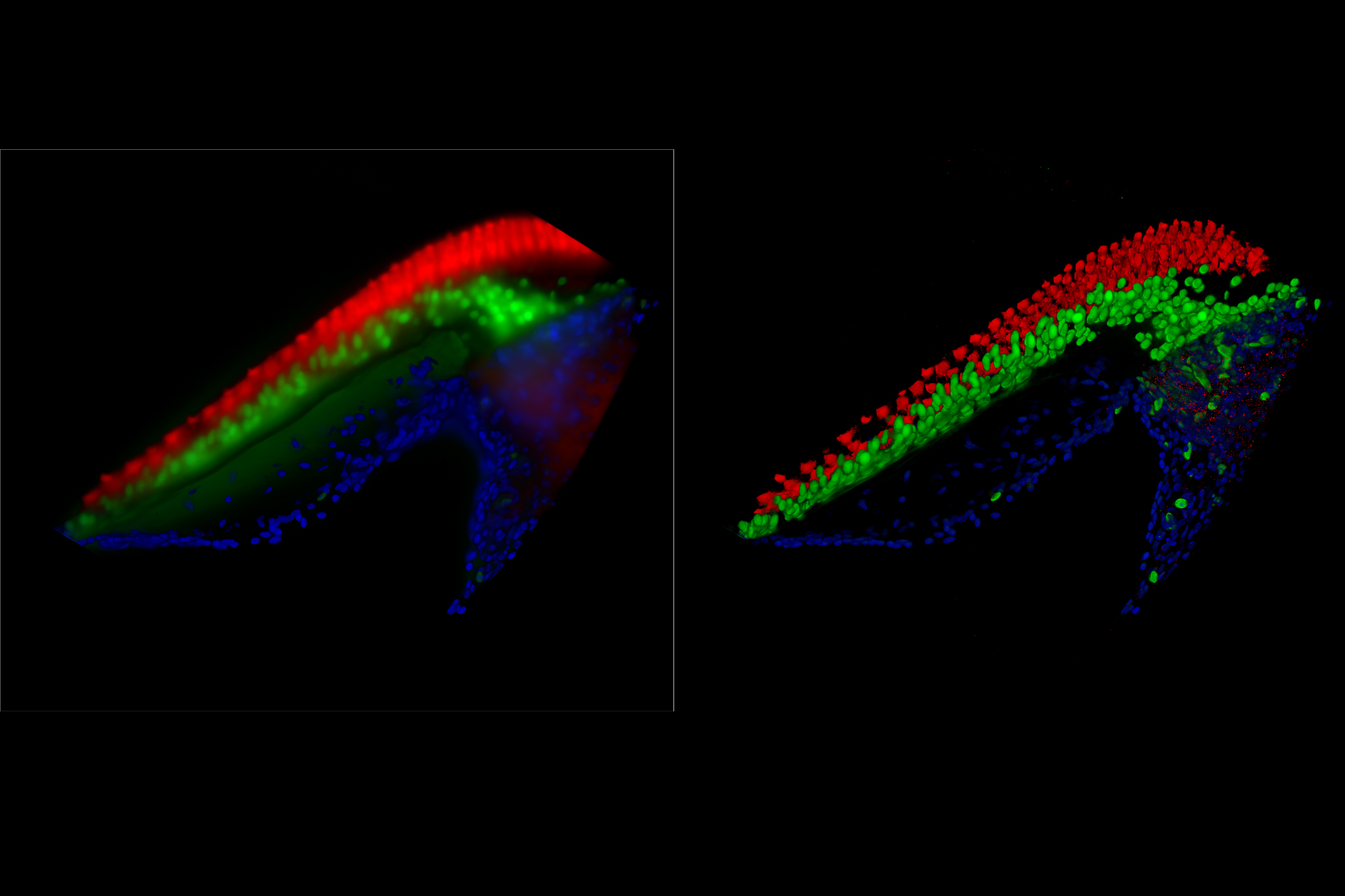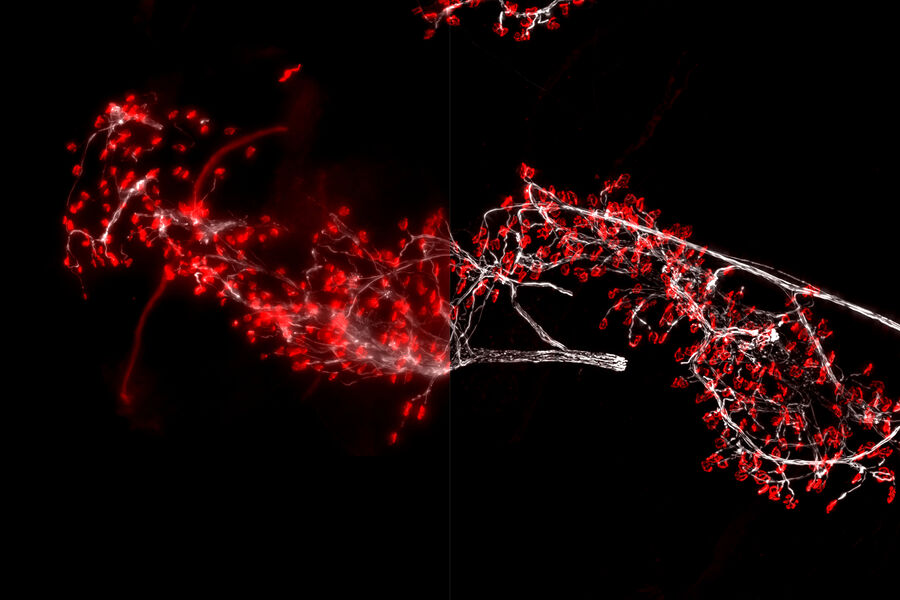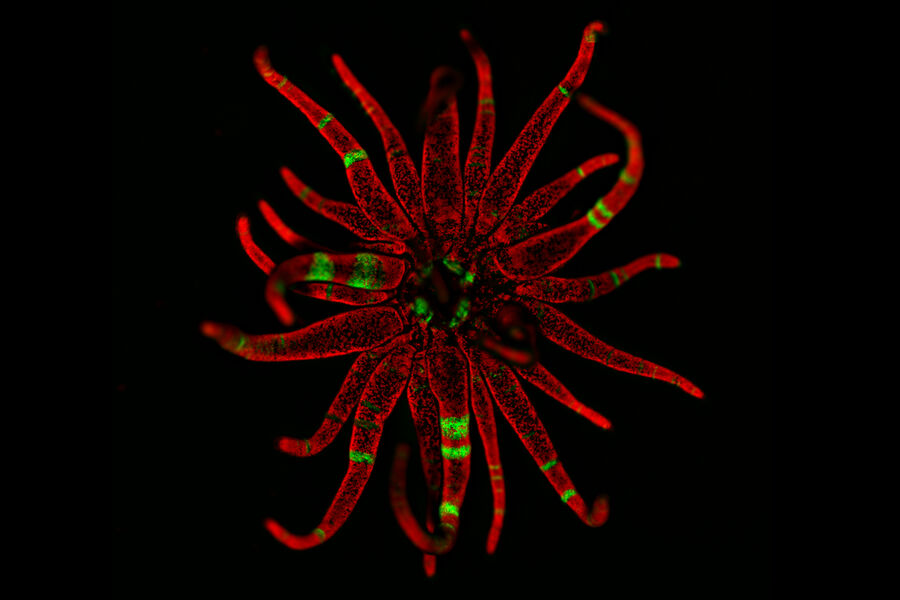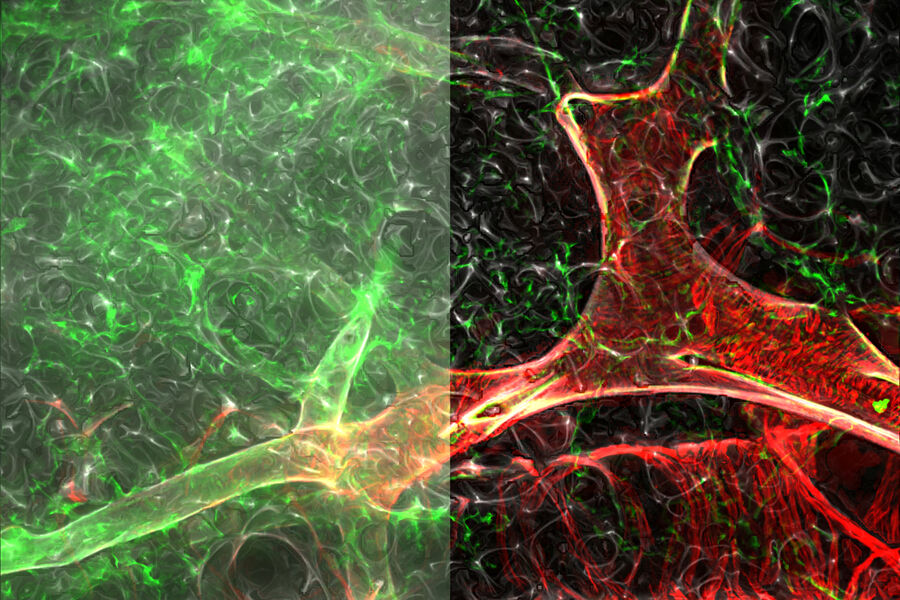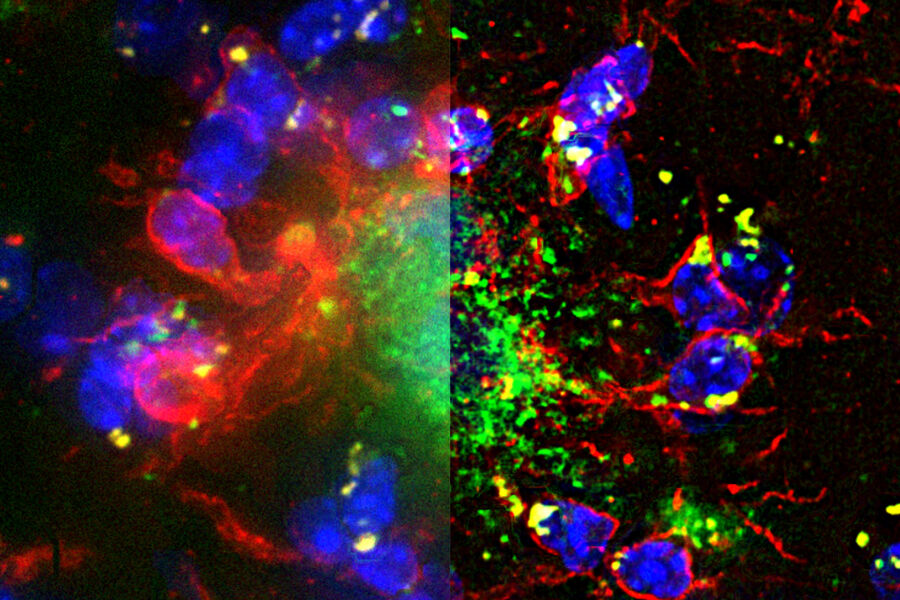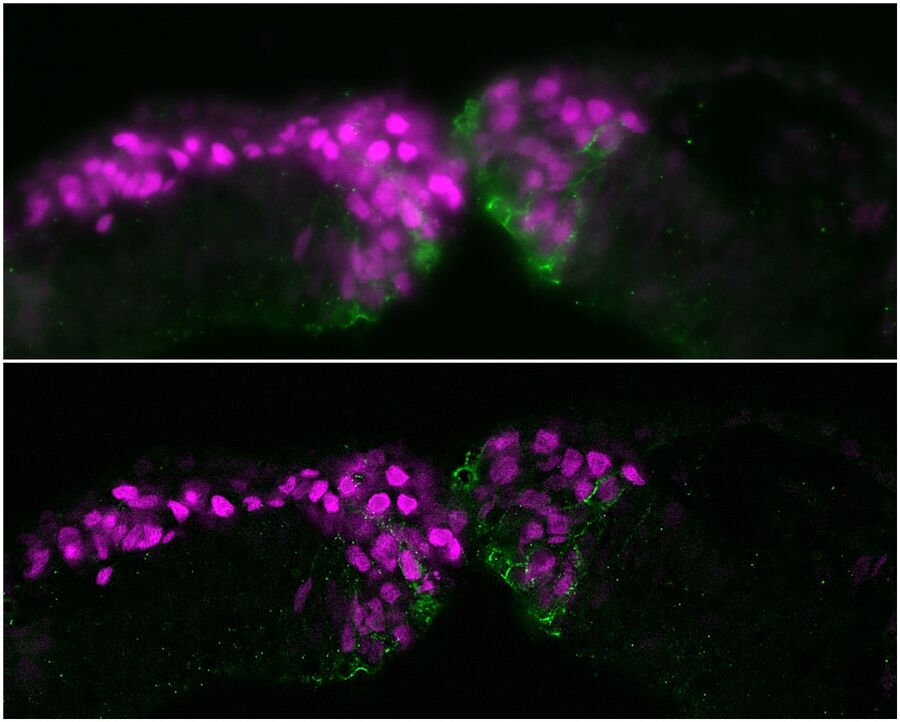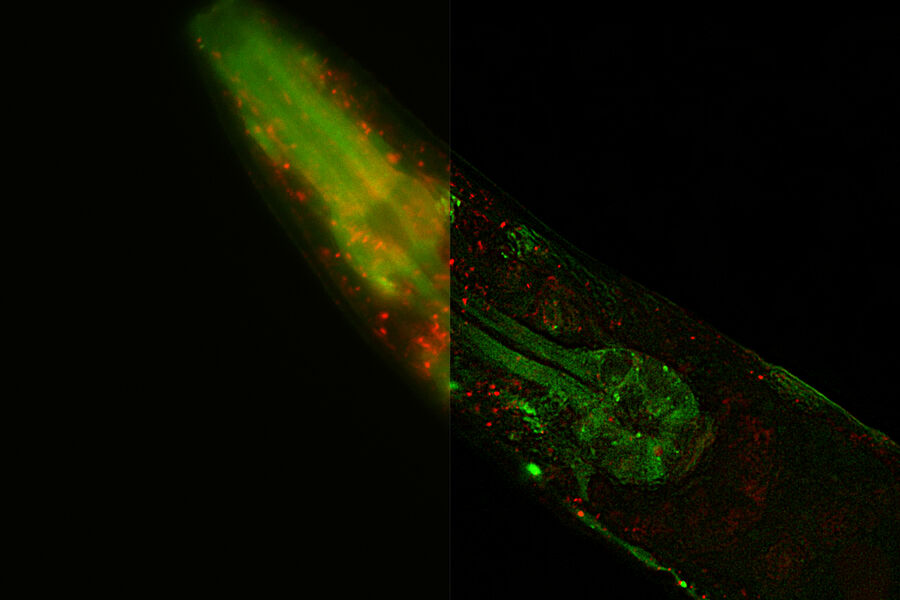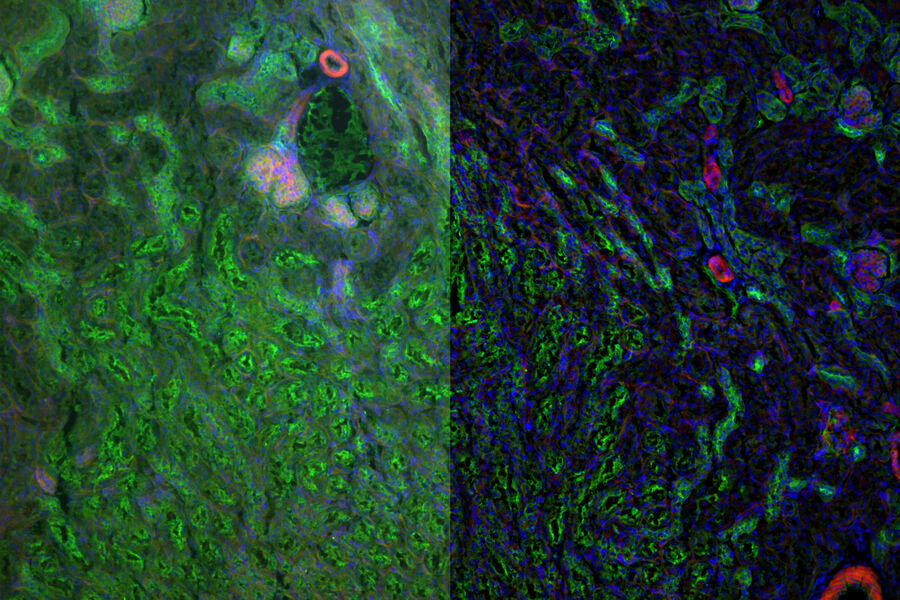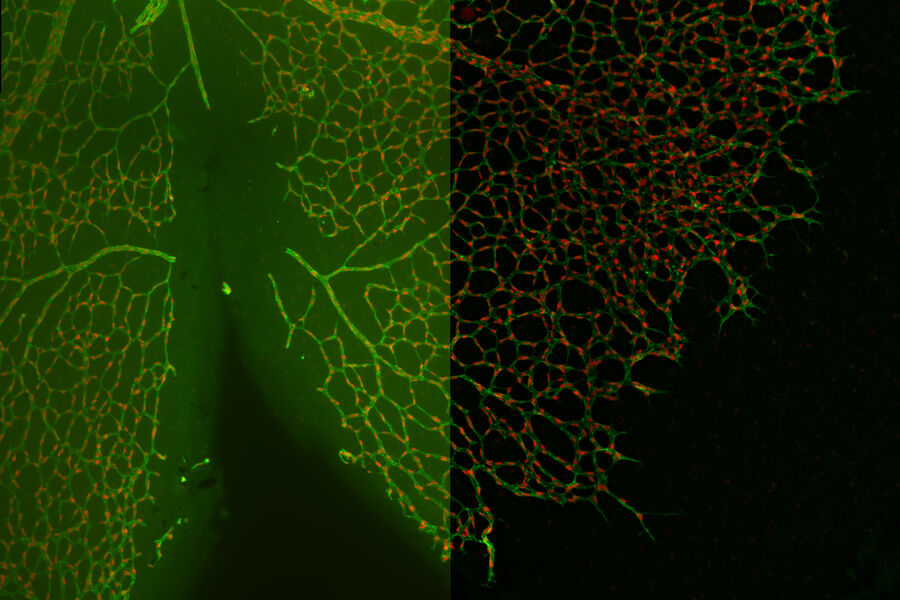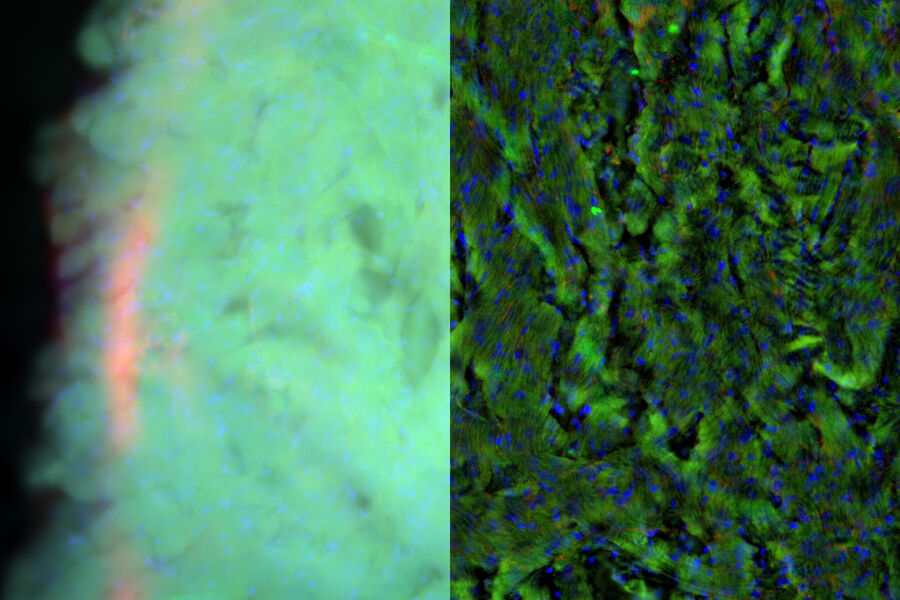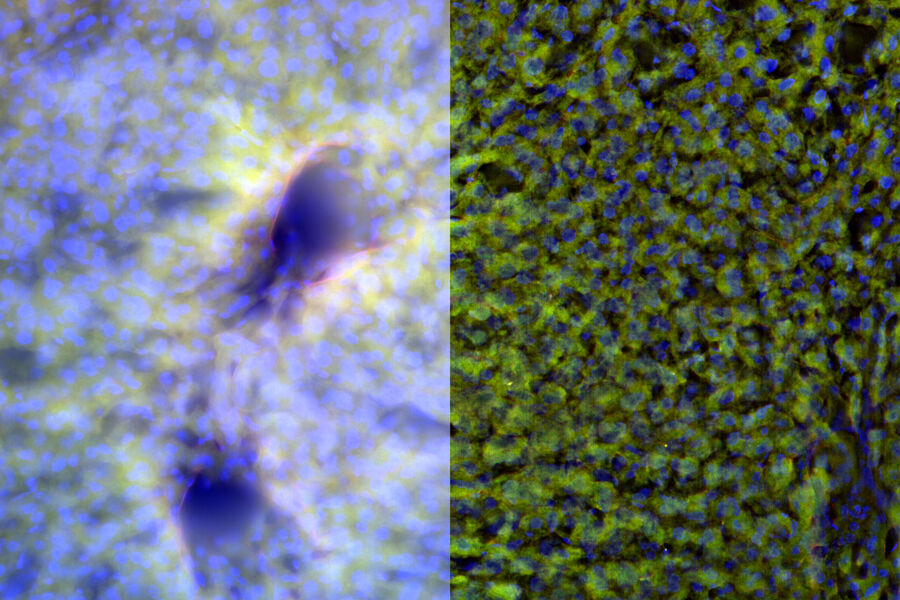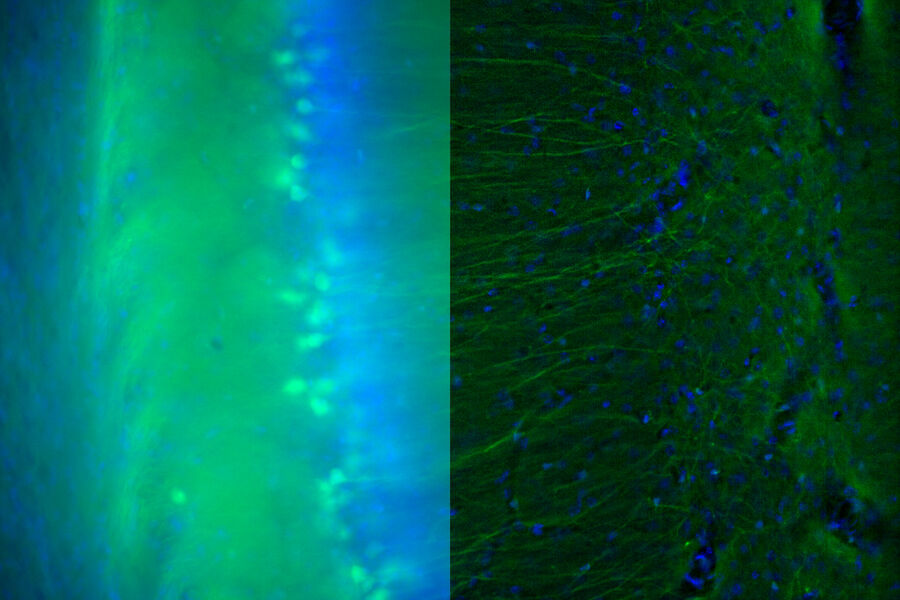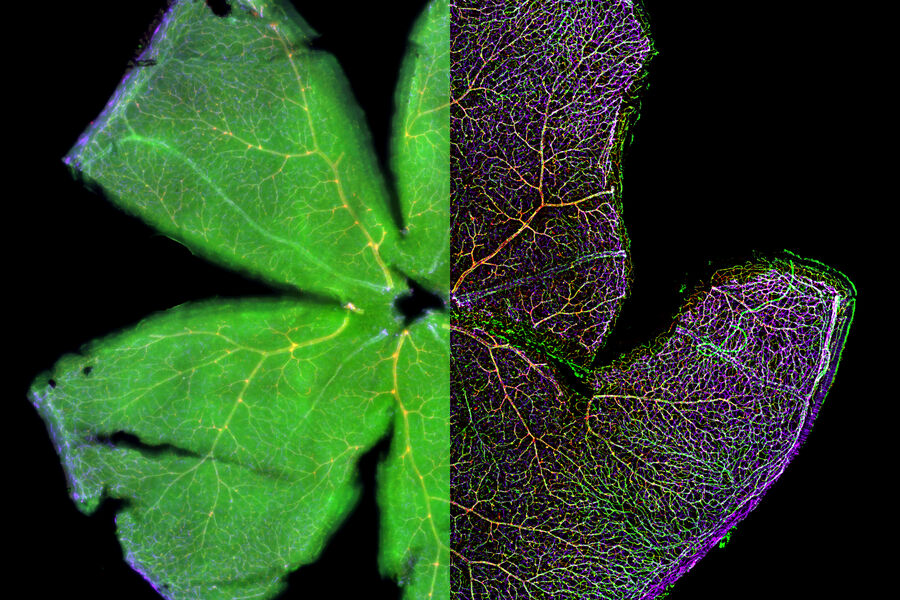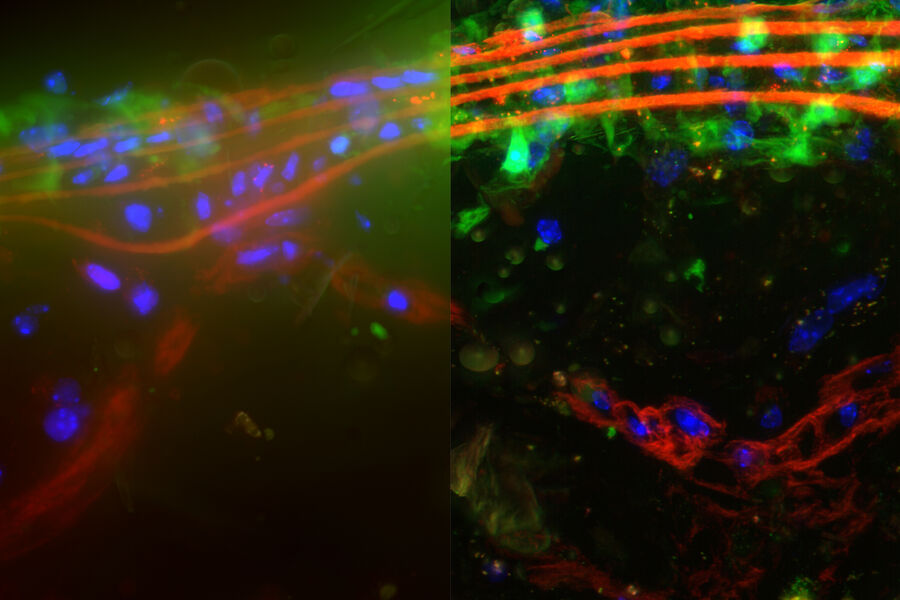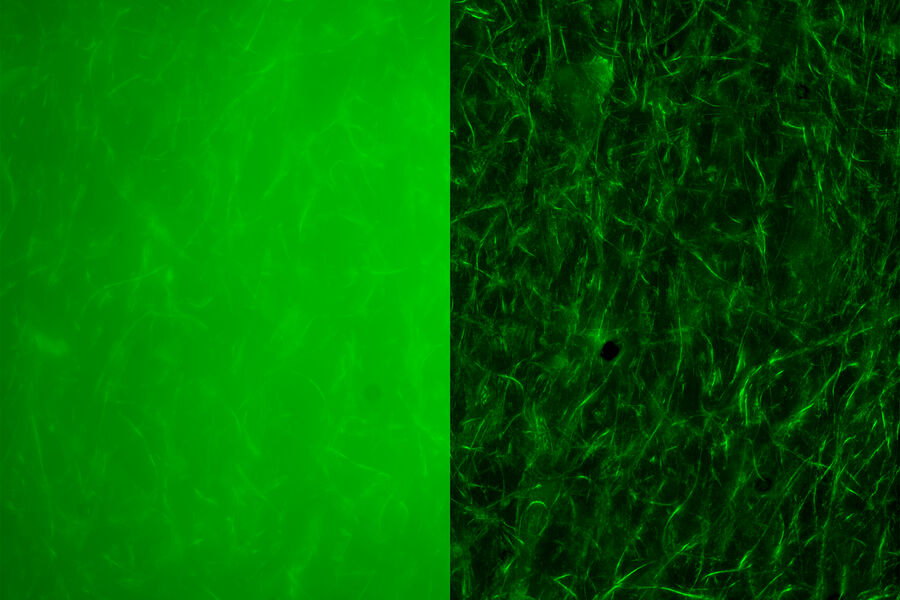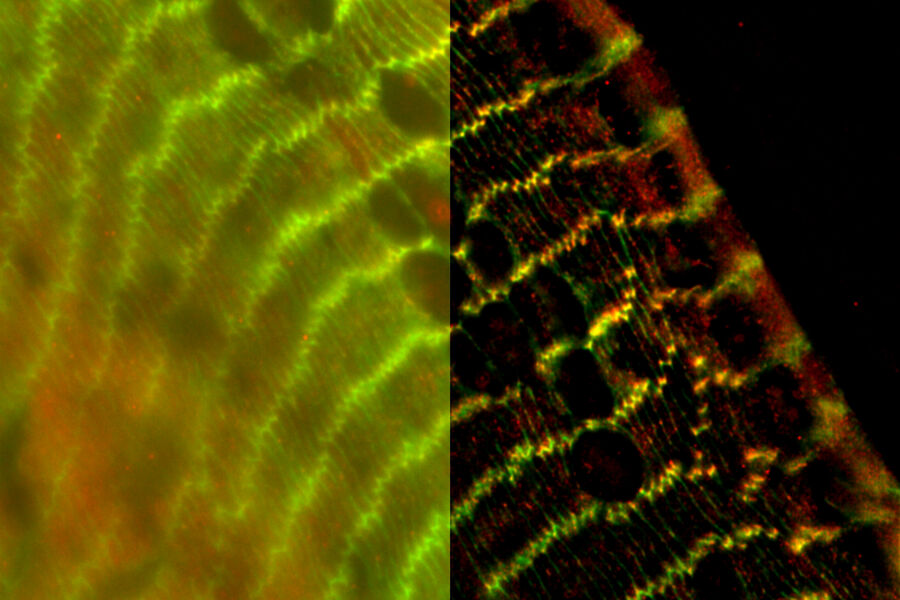Mouse lymphnode - Getting the complete picture for inflammation research
A part of the work at the Keppler lab involves the use of pre-clinical models for inflammatory disease to understand the interplay between cells during inflammation. In order to understand the distribution of the cells within the organ, the lab researchers needed to change from imaging 2D cryo-sections of lymph nodes to a method that is capable of viewing the whole organ.
They developed a clearing protocol to prepare the lymph nodes for imaging. Initially, they performed the imaging experiments using a confocal microscope, but this way took up to 18 hours to image just half of a lymph node. They could not use traditional widefield systems, because the autofluorescence coming from the tissue makes it impossible to see any significant amount of the desired signal.
Only with a THUNDER Imager, we could consider using a widefield-based system to study our organs
Dr. Selina Keppler, Munich, Germany.
Image the cells of interest within the lymph node in only a few minutes
Using a THUNDER Imager, the Keppler lab researchers found that they could clearly image the cells of interest within the lymph node in only a few minutes. In the example shown, they were able to clearly study the distribution of follicular cells (yellow), and blood vessels (magenta). Then they went on to study differences in wild type vs. inflamed lymph nodes. Having this initial overview in just 15 minutes helped them develop a more efficient screening workflow where they could then select the areas they wanted to analyze in detail using confocal microscopy enabling more detail segmentation or single cell analysis.
The THUNDER Imager has made our research more efficient, in terms of time savings, and more complete, as we can now look at whole structures and are not limited at just looking at parts of the organ
Dr. Selina Keppler, Munich, Germany.
Arabidopsis thaliana root - THUNDER Imager
Hela Cells - THUNDER Imager
Mouse brain cortex - THUNDER Imager
Mouse embryonic kidney - THUNDER Imager
Murine esophageal organoids - THUNDER Imager
Mouse whole mount retina - THUNDER Imager
1 mm mouse brain section - THUNDER Imager
C. elegans. Transgenic GFP - THUNDER Imager
Mouse cortical neurons - THUNDER Imager
Adult Drosophila muscle - THUNDER Imager
Drosophila Embryo - THUNDER Imager
Mouse heart - THUNDER Imager 3D Cell Culture
Drosophila Follicles - THUNDER Imager 3D Cell Culture
Cortical neurons - THUNDER Imager
Microglia in hippocampal region - THUNDER Imager
Organoid Cluster - THUNDER Imager
Cranial nerves development - THUNDER Imager 3D Cell Culture
Pancreatic islet - THUNDER Imager 3D Cell Culture
Image courtesy of the Matthias Von Herrath Lab at the La Jolla Institute of Immunology, La Jolla, CA., USA
Mouse Brain - THUNDER Imager
Pollen Flower - THUNDER Imager
C. elegans Gonades - THUNDER Imager
Mouse aorta - THUNDER Imager 3D Live Cell
Mouse aorta - THUNDER Imager 3D Live Cell
Infected MDCK epithelial cells - THUNDER Imager
Ferret brain, rabies infected - THUNDER Imager 3D Cell Culture
Influenza in lung epithelial cells (porcine) - THUNDER Imager 3D Cell Culture
Lung Organoid - THUNDER Imager 3D Cell Culture
Pseudoislets (pancreatic beta cells) - THUNDER Imager 3D Cell Culture
Locust ganglion - THUNDER Imager 3D Tissue
HeLa cell spheroid - THUNDER Imager 3D Live Cell & 3D Cell Culture
Zebrafish - THUNDER Imager 3D Live Cell & 3D Cell Culture
Mouse kidney section - THUNDER Imager Tissue 3D
Cultured Cortical Neurons - THUNDER Imager 3D Cell Culture
Cultured VERO cells - THUNDER Imager 3D Cell Culture
YFP mouse brain slice - THUNDER Imager Tissue
Drosophila third instar larval - THUNDER Imager Tissue
Cyclops - THUNDER Imager Tissue
Zebrafish – THUNDER Imager Model Organism
Mouse - THUNDER Imager Model Organism
Organoid - THUNDER Imager Model Organism
Drosophila brain - THUNDER Imager 3D Live Cell
Honeybee leg - THUNDER Imager Model Organism
Paramecium - THUNDER Imager
Mouse kidney section - THUNDER Imager 3D Tissue
Mouse kidney section - THUNDER Imager 3D Tissue
Smooth Muscle - THUNDER Imager Model Organism
Primary culture, rat - THUNDER Imager 3D Cell Culture
Mouse kidney section - THUNDER Imager 3D Tissue
Zebrafish heart - THUNDER Imager Tissue
Zebrafish embryo – THUNDER Imager Model Organism
C2C12 cells - THUNDER Imager 3D Live Cell & 3D Cell Culture
Images courtesy of Dr. Lucas Smith, Department of Neurobiology, Physiology and Behavior, College of Biological Sciences, University of California at Davis, Davis CA, USA.
Virally labeled neuron - THUNDER Imager Model Organism
Images courtesy of Dr. Fikri Birey from the Dr. Sergiu Pasca laboratory, CA, USA.
Transgenic Drosophila photoreceptors of the eye - THUNDER Imager 3D Cell Culture
Cochlea cell - THUNDER Imager 3D Tissue
Neuromuscular junctions - THUNDER Imager 3D Tissue
Sea anemone polyp (Exaiptasia pallida) - THUNDER Imager Model Organism
Image courtesy of Christian Renicke, CA, USA.
Mouse lung - THUNDER Imager Tissue
Hippocampus showing an amyloid plaque - THUNDER Imager 3D Cell Culture
(green, stained with 6E10 antibody, marker of anti-beta amyloid) surrounded by microglia/microphages (red, stained with Anti-Abi1 antibody; blue, DAPI).
Left – Raw data with Extended Depth of Field projection;
Right – Large Volume Computationally Cleared Z-stack with Extended Depth of Field projection.
Images courtesy of Prof. Mehrdad Shamloo, CA, USA.
Neural crest (NC) embryonic cell population - THUNDER Imager 3D Cell Culture
Image courtesy of Michael Piacentino, BronnerLab, California Institute of Technology, Pasadena, CA, USA.
Adult mouse ovary - THUNDER Imager 3D Cell Culture
C. elegans - THUNDER Imager Model Organism
The green punctae (GFP) are APs while the ALs quench GFP in the acidic environment and emit only the mCherry signal.
Image courtesy of Dr. Aditi U. Gurkar, University of Pittsburgh, PA, USA
Kidney Section - THUNDER Imager 3D Tissue
Retina Section - THUNDER Imager 3D Tissue
Heart Section - THUNDER Imager 3D Tissue
Liver Section - THUNDER Imager 3D Tissue
Brain Section - THUNDER Imager 3D Tissue
Mouse Retina - THUNDER Imager 3D Cell Culture
Sample courtesy by Jeremy Burton, PhD and Jiyeon Lee, PhD, Genentech Inc., South San Francisco, USA. Imaged by Olga Davydenko, PhD (Leica)
Mouse Aorta - THUNDER Imager 3D Tissue
Fiber - THUNDER Imager 3D Cell Culture
Mouse Lens Section - THUNDER Imager 3D Cell Culture
Image courtesy of Dr. Nathalie Houssin, Plagemen Lab, Ohio State University, USA
